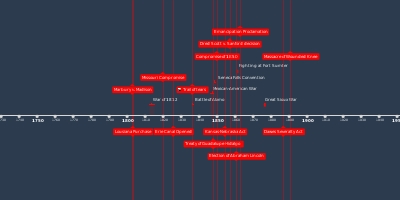18 magg 1896 anni - Plessy v. Ferguson
Descrizione:
Key Event: The decision of Plessy v. Ferguson is a key event because it undermined the effects of the Reconstruction Era due to the growth of white sepremacy in the south.Defined: Plessy was charged for violating the 1890 law which required segregation, but he argued that the law violated the Equal Protection Clause of the 14th Amendment. The court decided that the separate but equal law was permitted on intrastate railroads and that the 14th Amendment only protected political and civil rights-not social rights.
Described: Reconstruction had ended and the promises of equality guaranteed by the 13th, 14th, and 15th amendments was receding. White supremacy was also gaining popularity among the southern states. During reconstruction, African Americans and Caucasians had shared facilities, until the 1880s where segregation was enforced. Specifically, railways had to provide separate cars for the two races. Homer Adolph Plessy who is 7/8s Caucasian and ⅛ African American, sat in the Caucasian car and was requested to leave. However he refused and was arrested and jailed. This was the start of the Plessy v. Ferguson case of 1896.
Short Term:The court case had proven that separate but equal was permissible, ensuring that the Jim Crow South would survive. The amount of segregated facilities had also increased, as it did not violate the Constitution.
Long Term: The Brown v. Board of Education would discuss justice Harlan’s opinion in Plessy v. Ferguson, deciding that public education should be exempted from the separate but equal law.
Aggiunto al nastro di tempo:
Data:
18 magg 1896 anni
Adesso
~ 129 years ago
